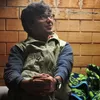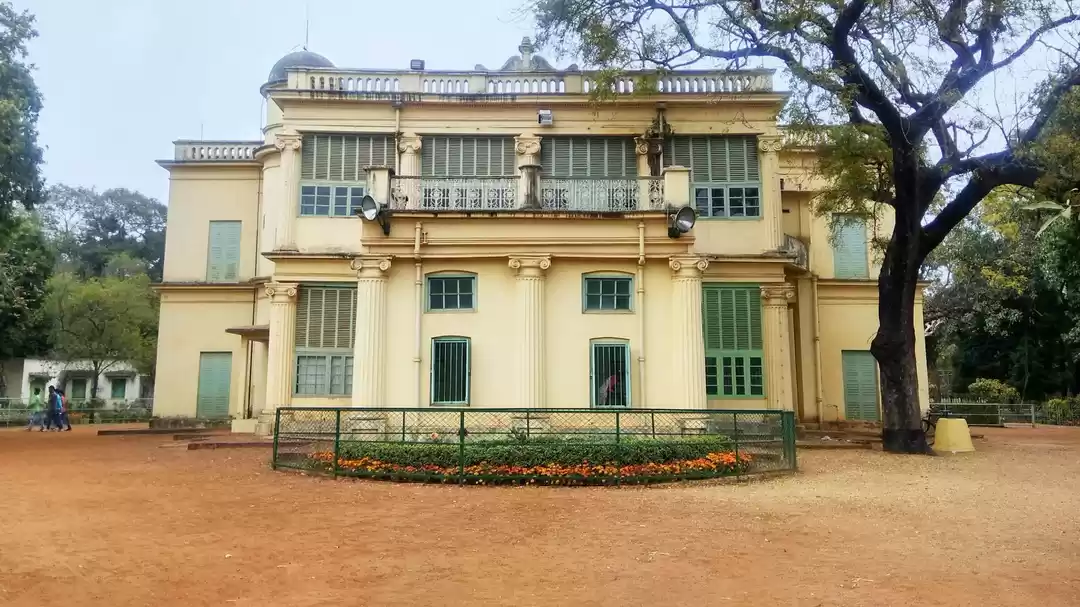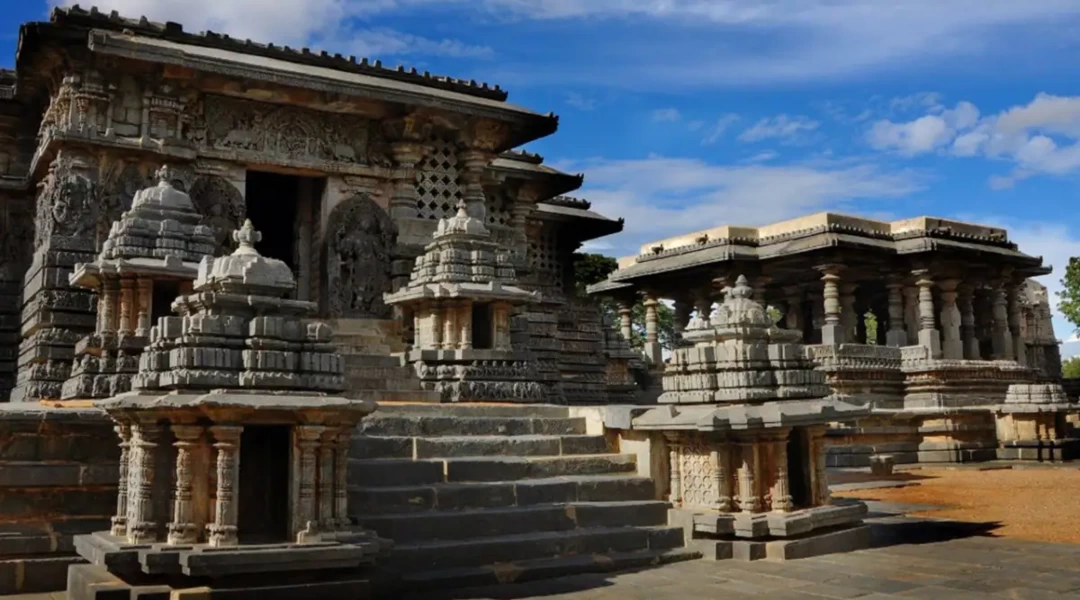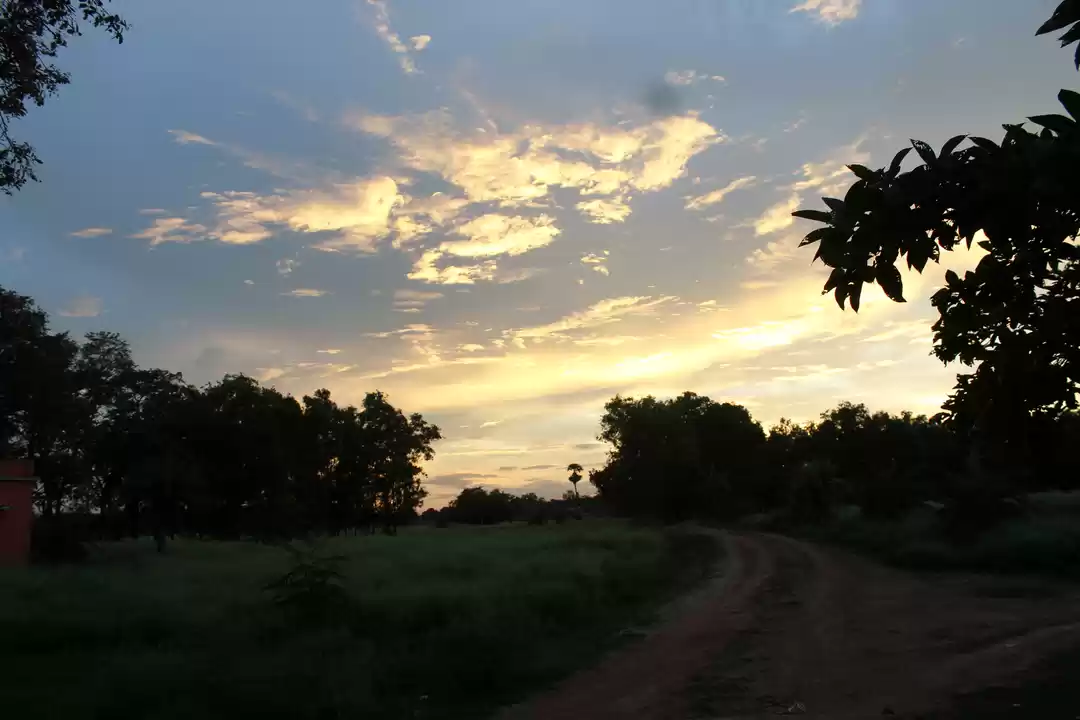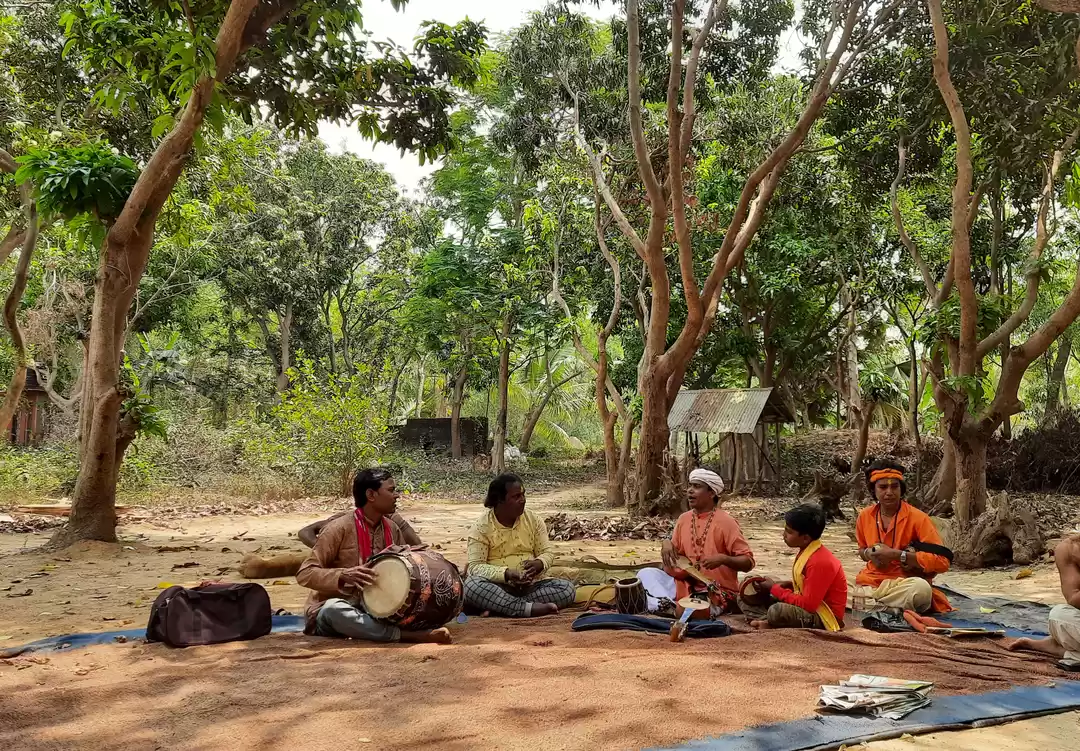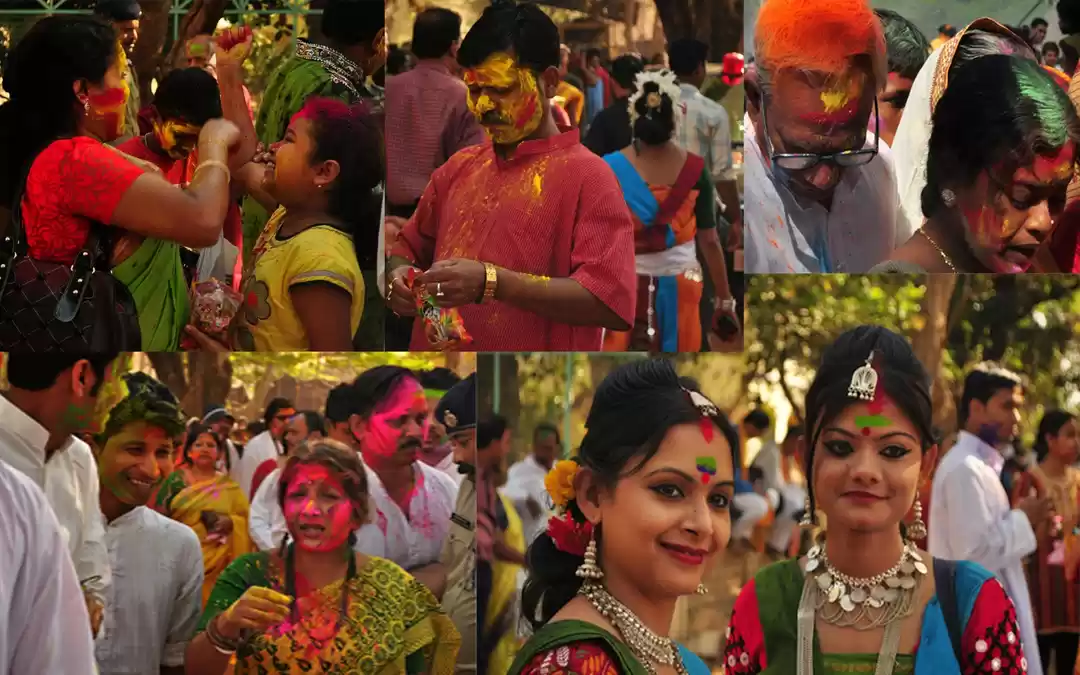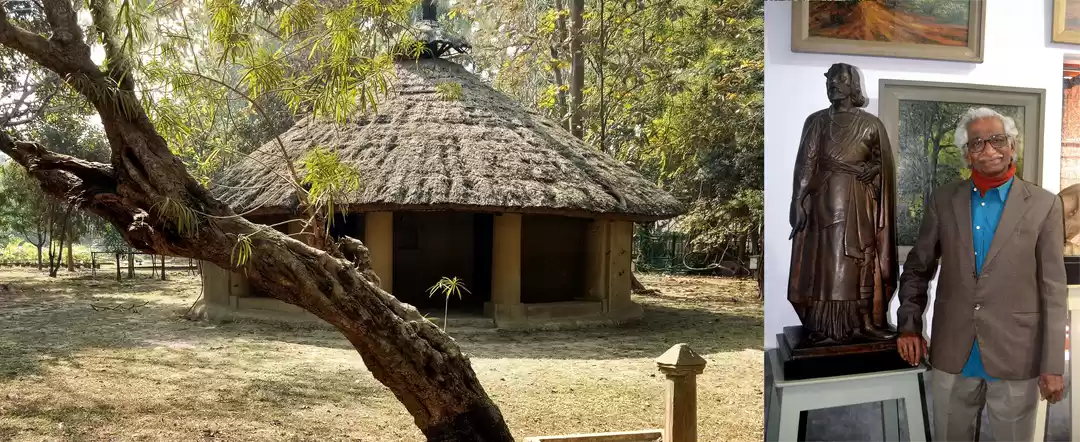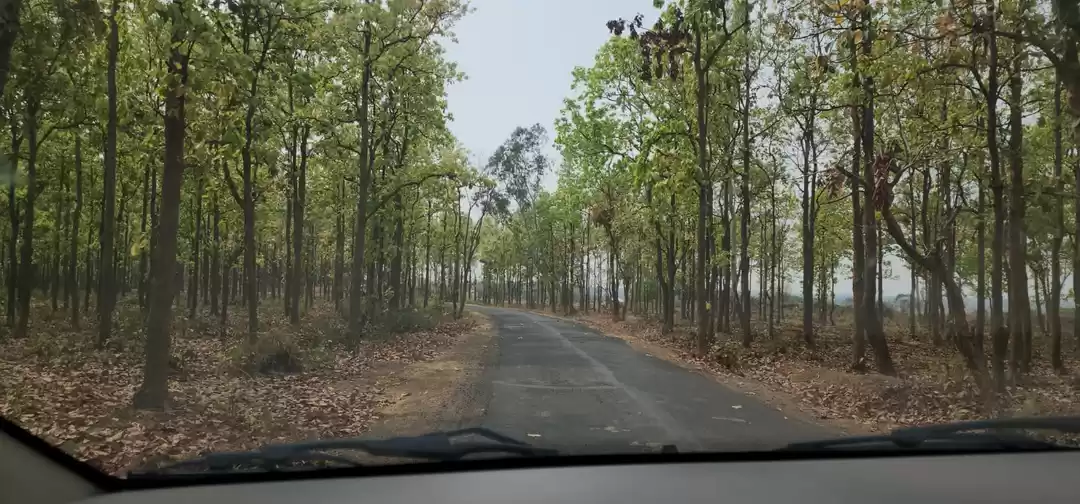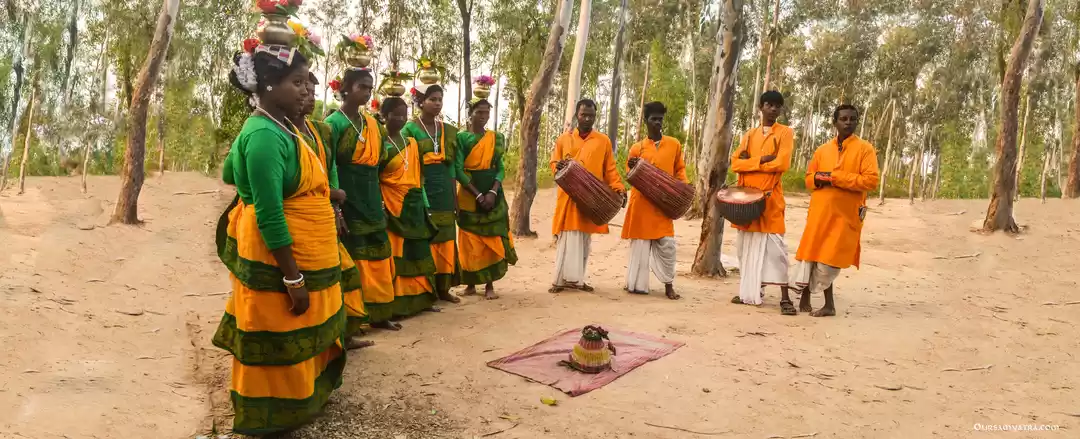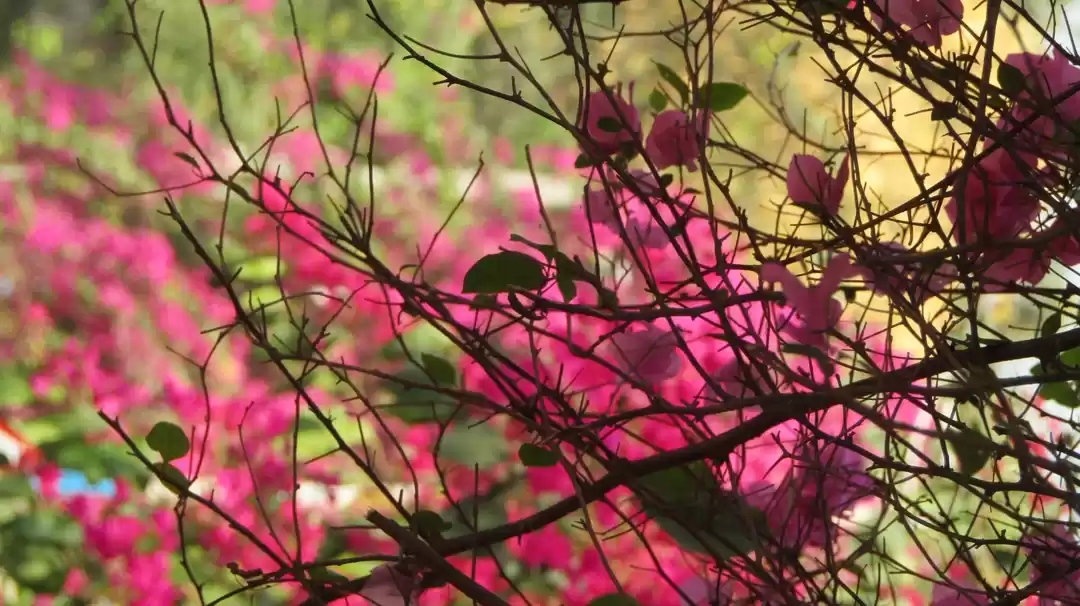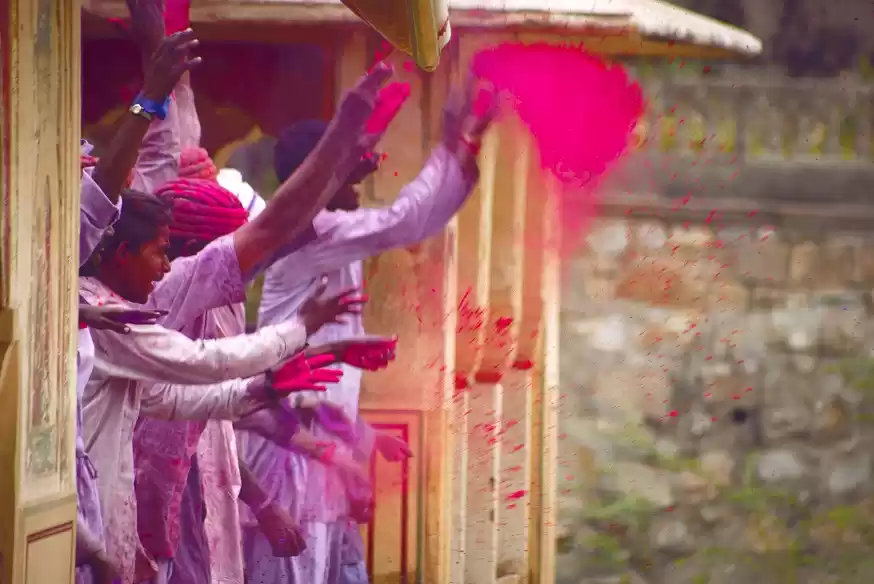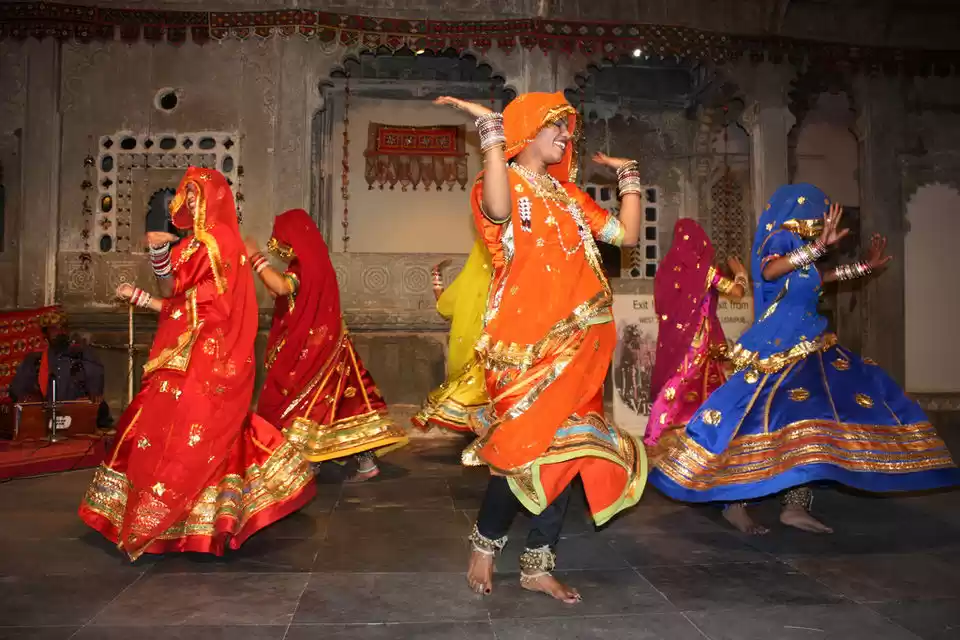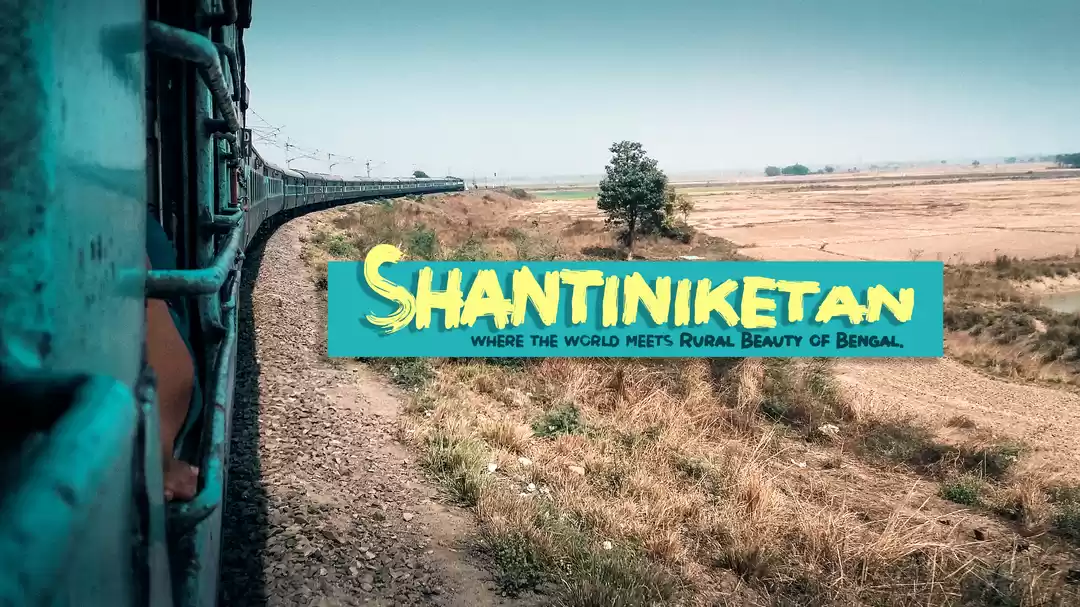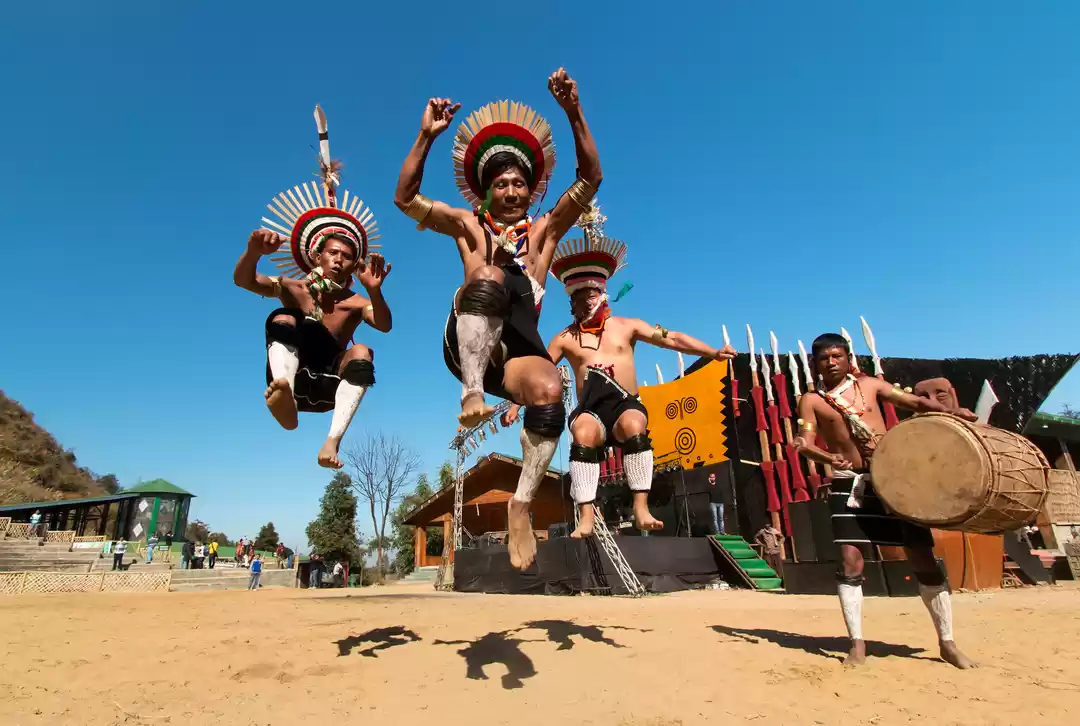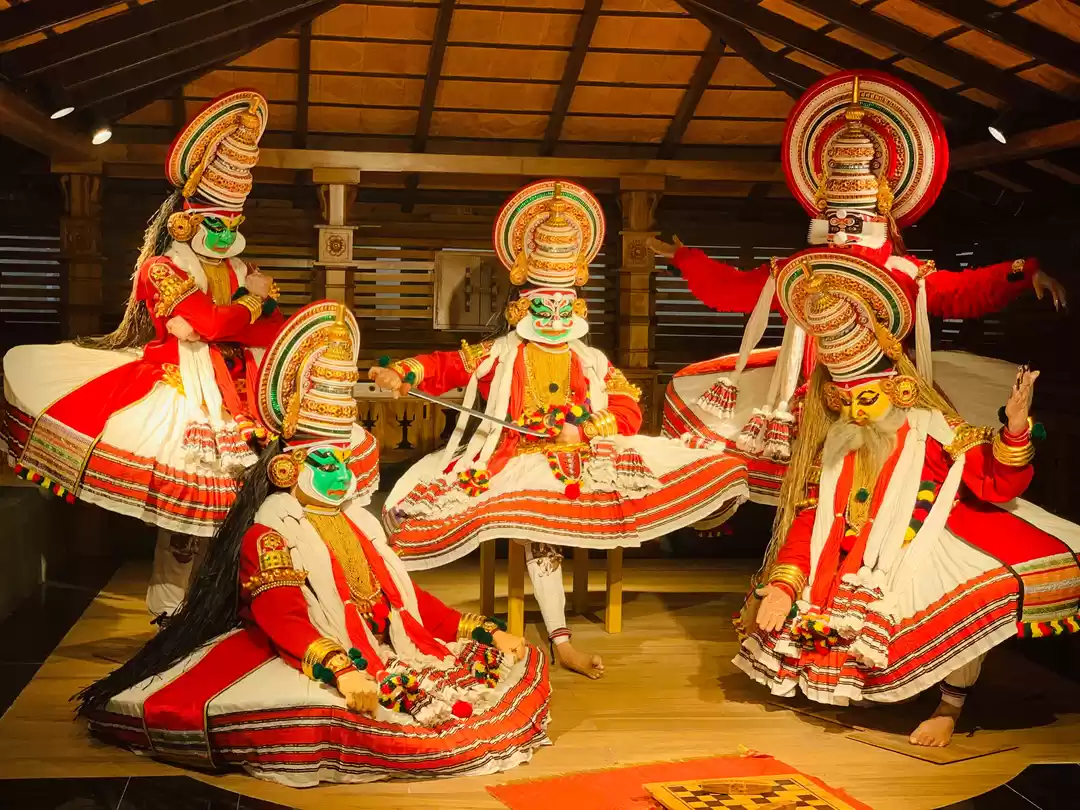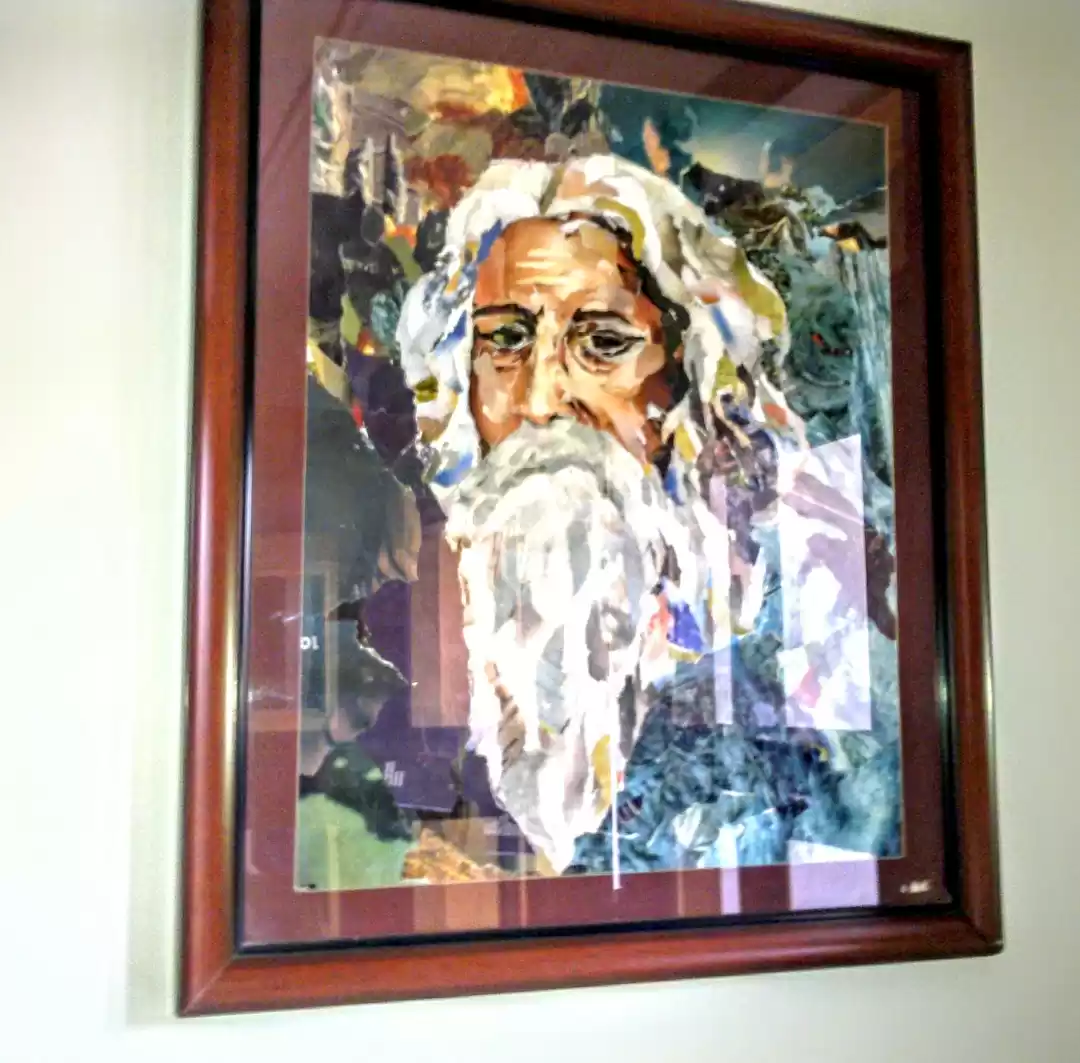
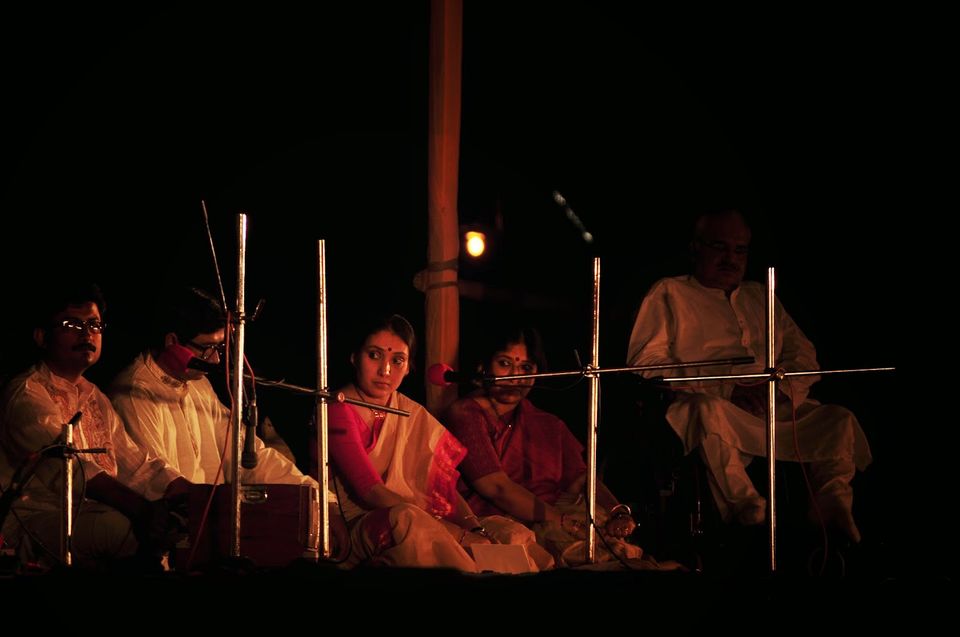
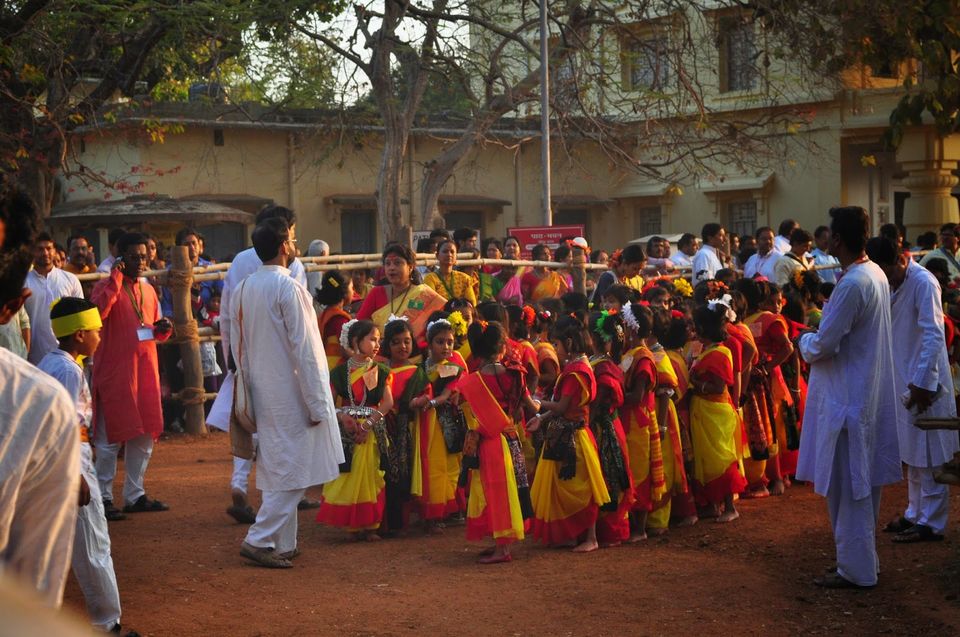
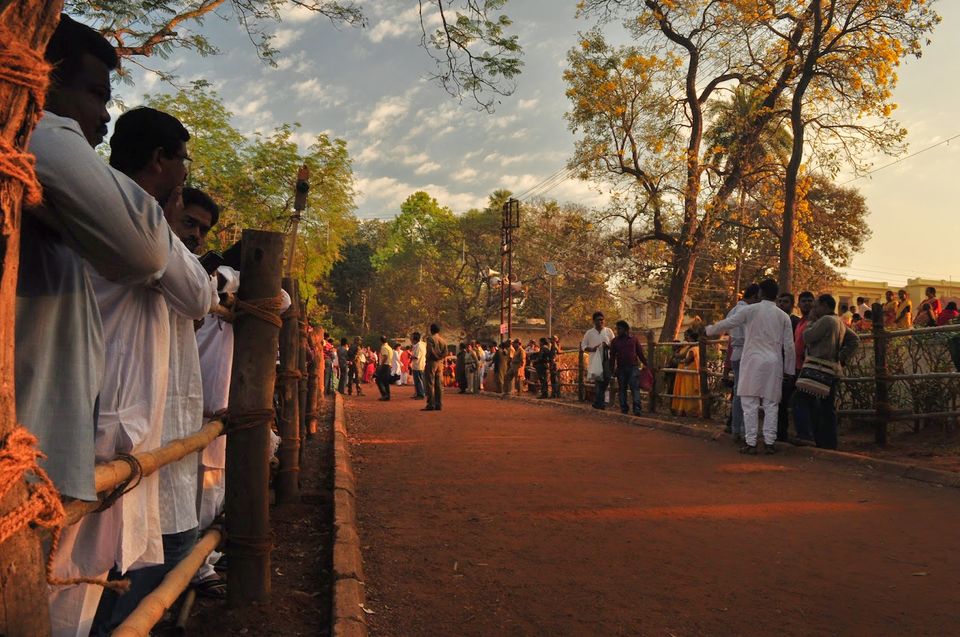
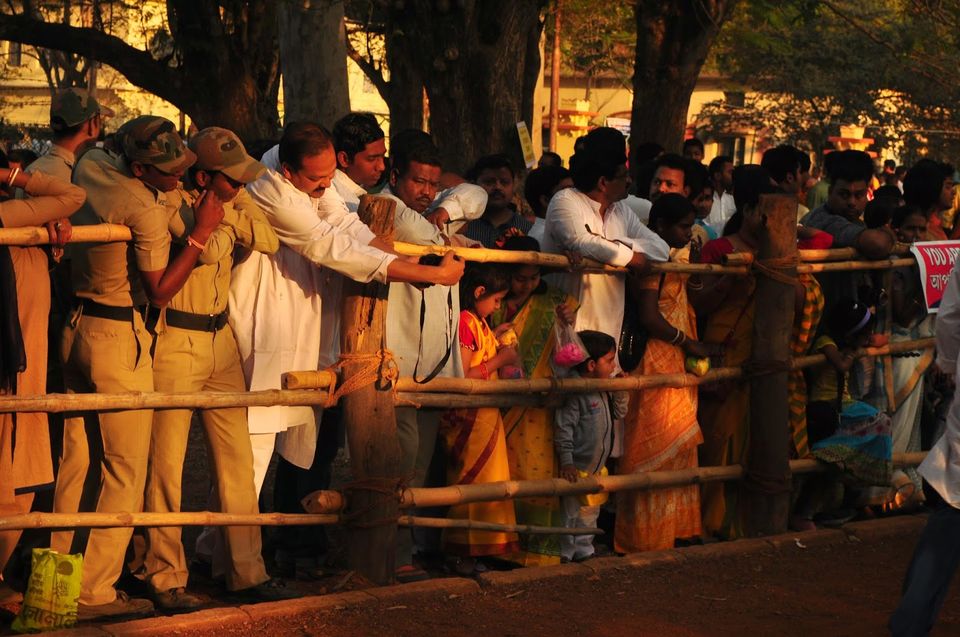
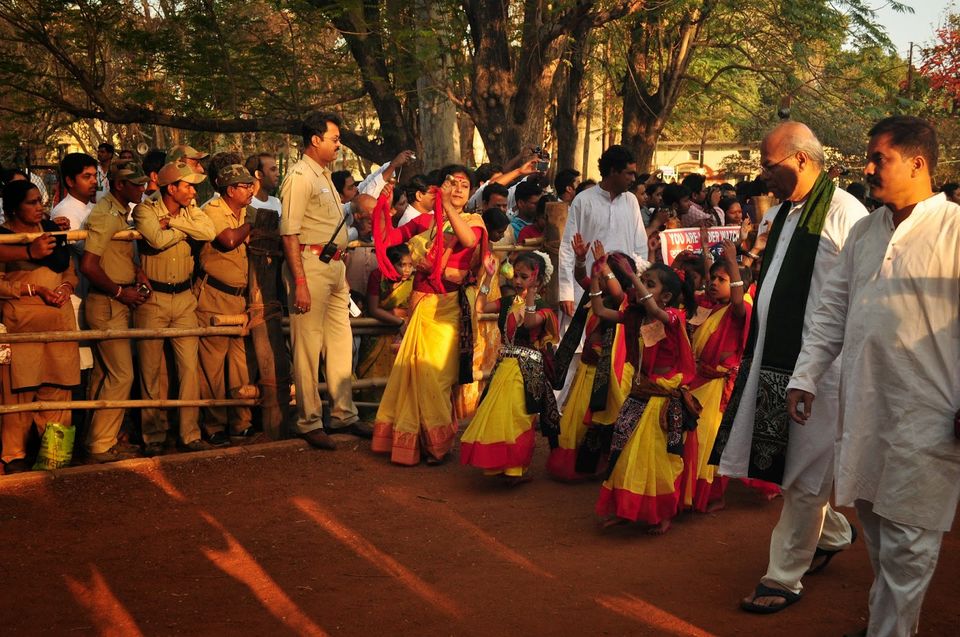
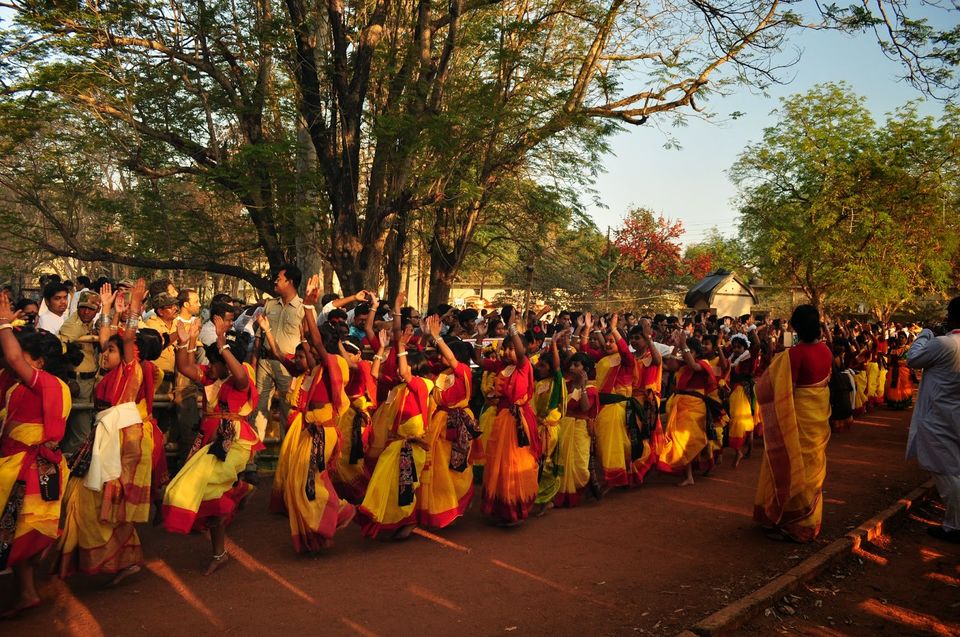
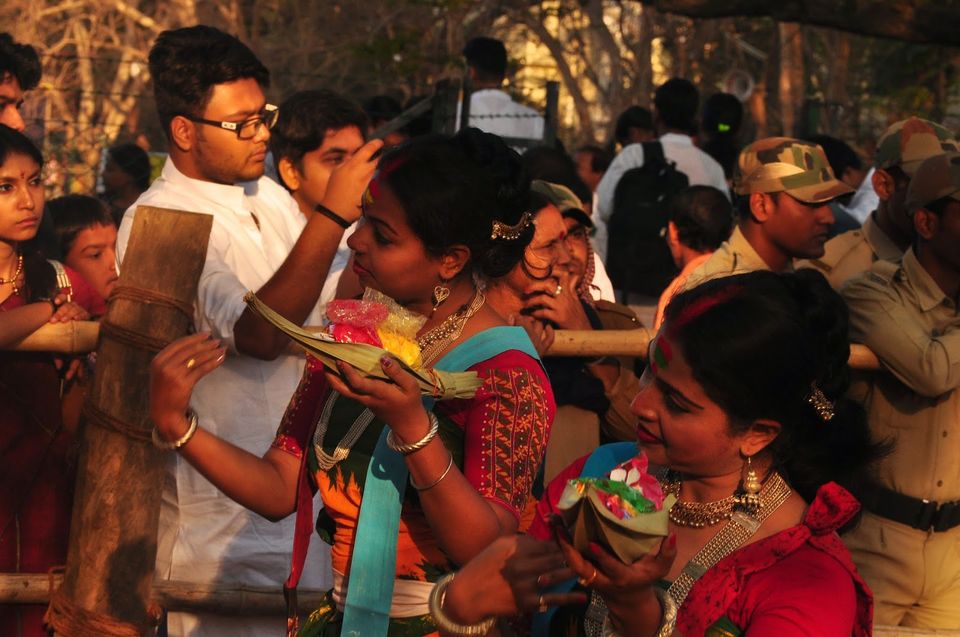
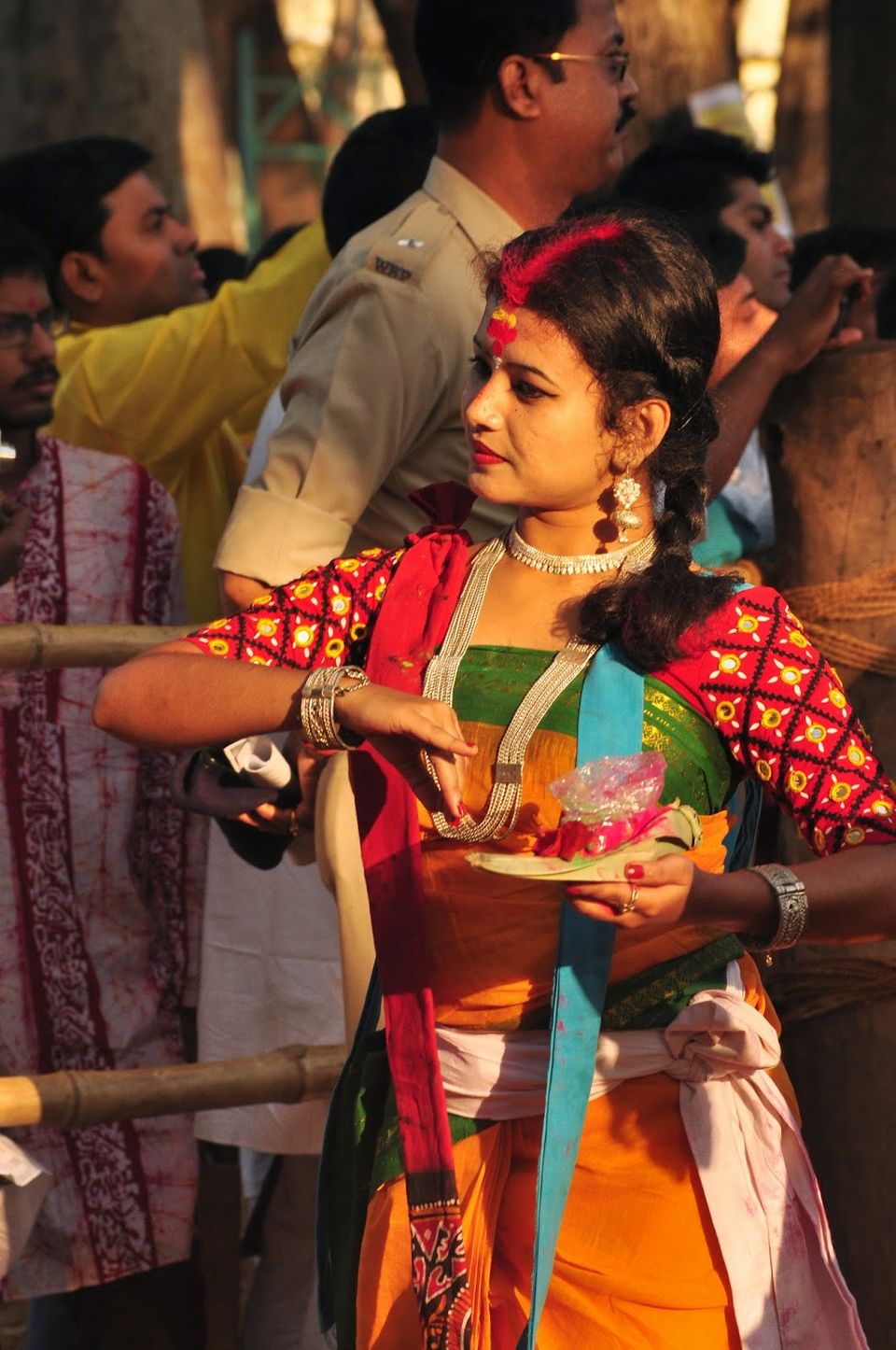
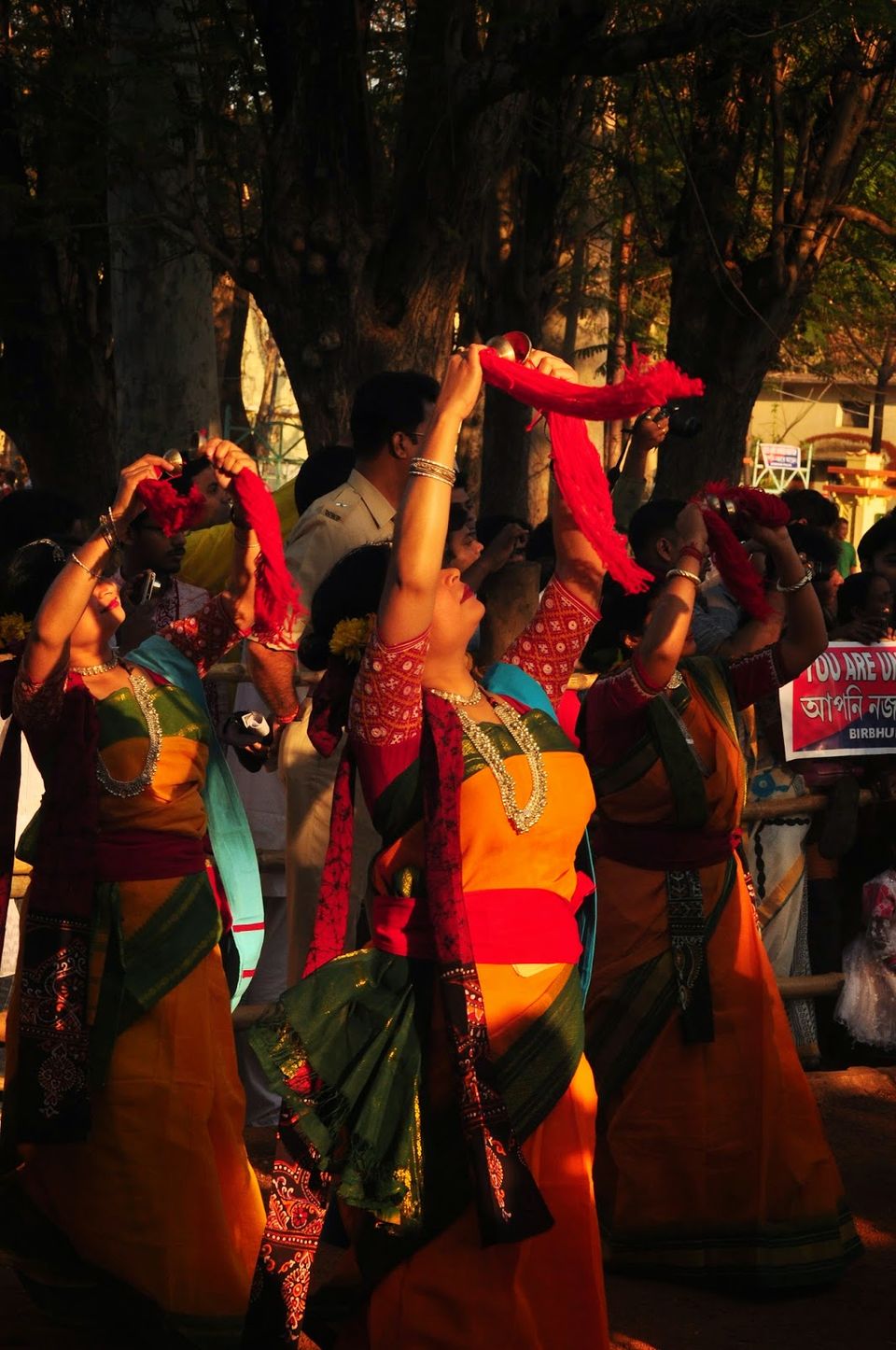
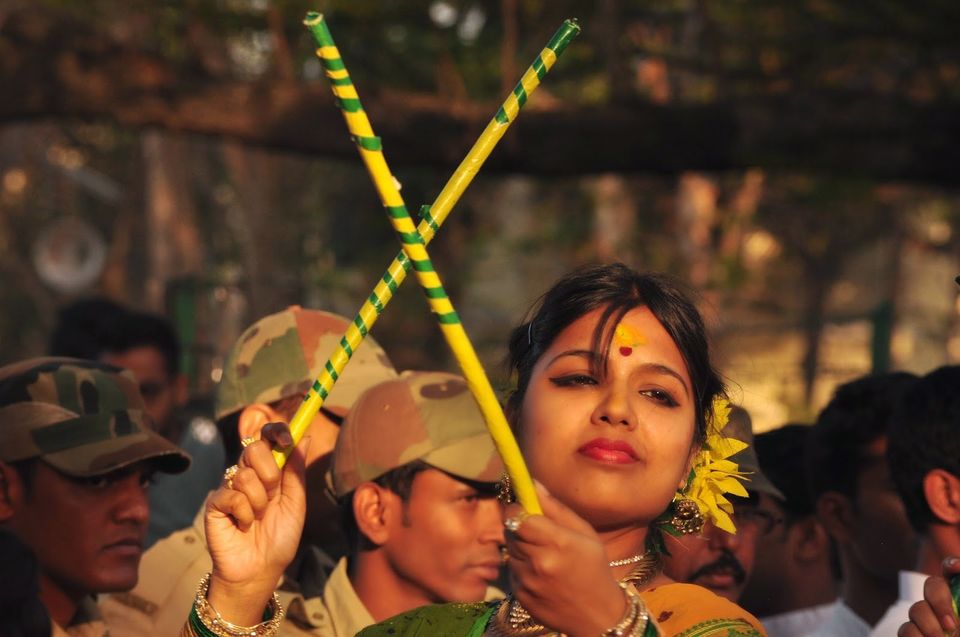
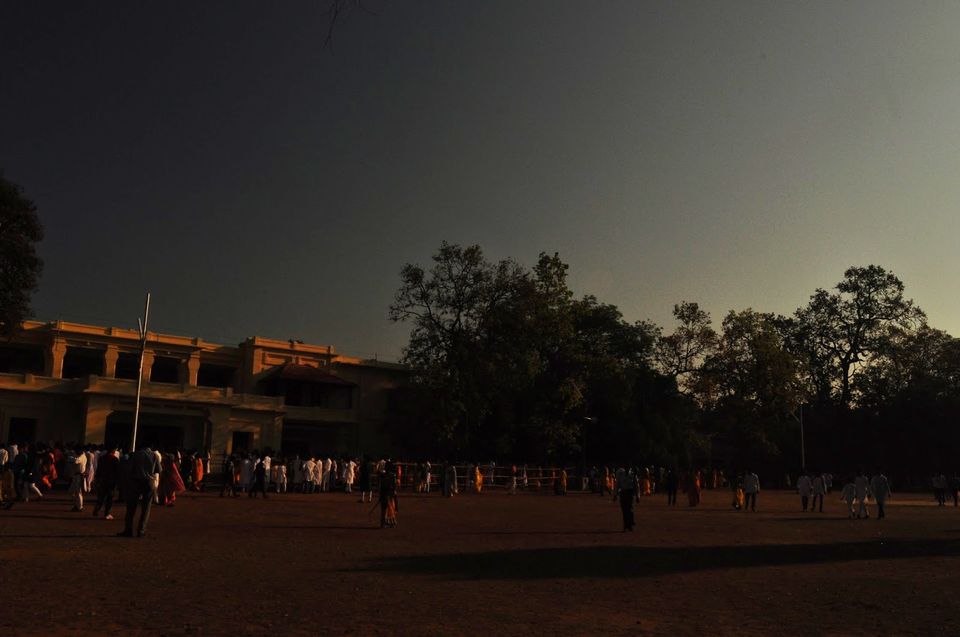
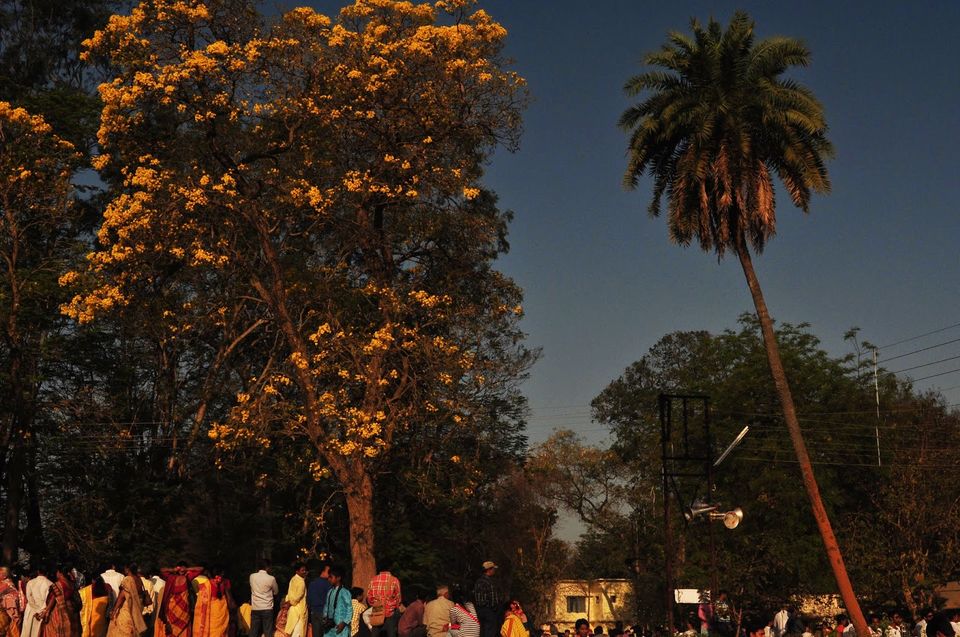
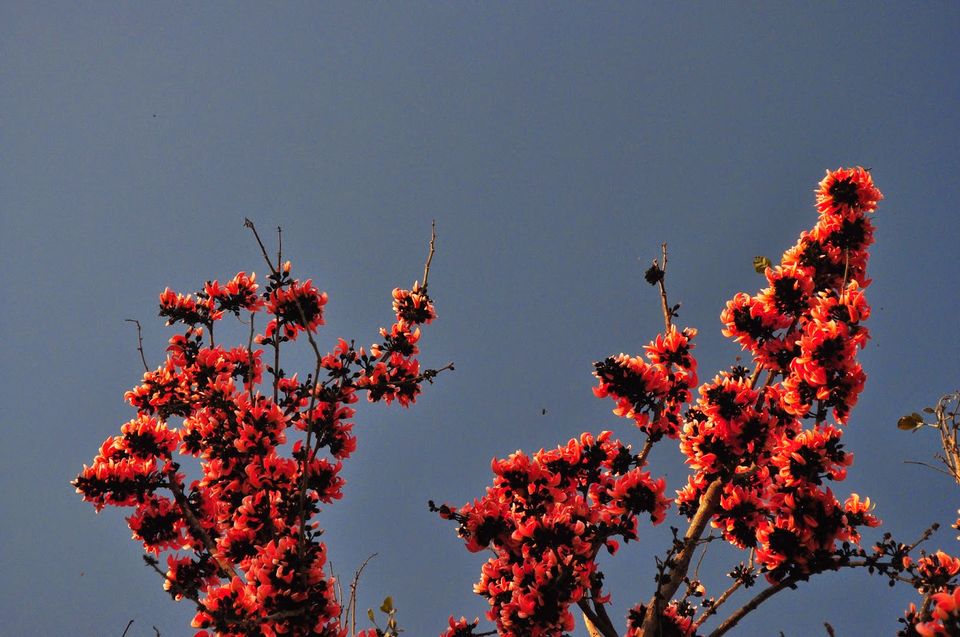
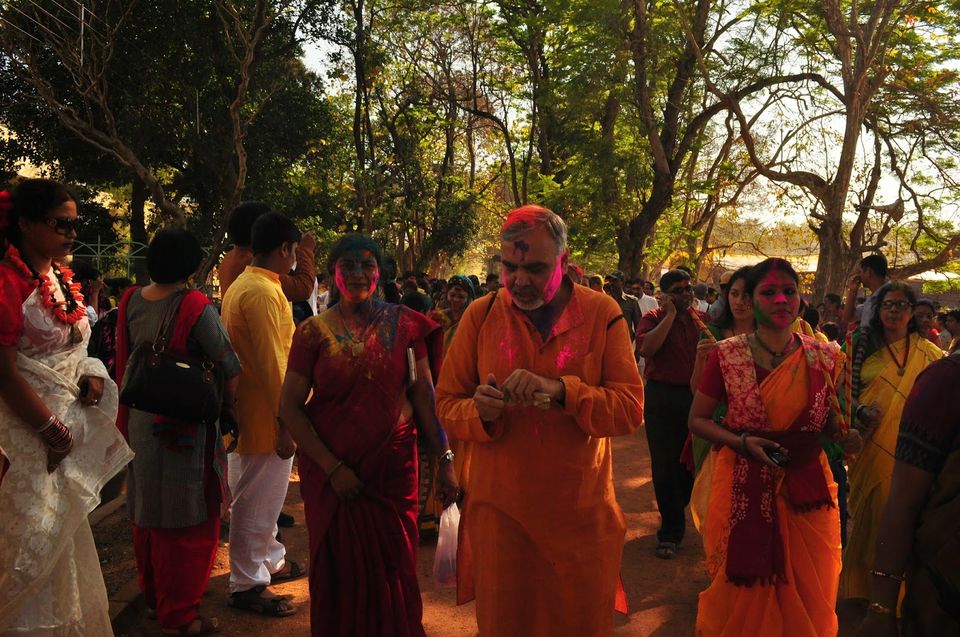
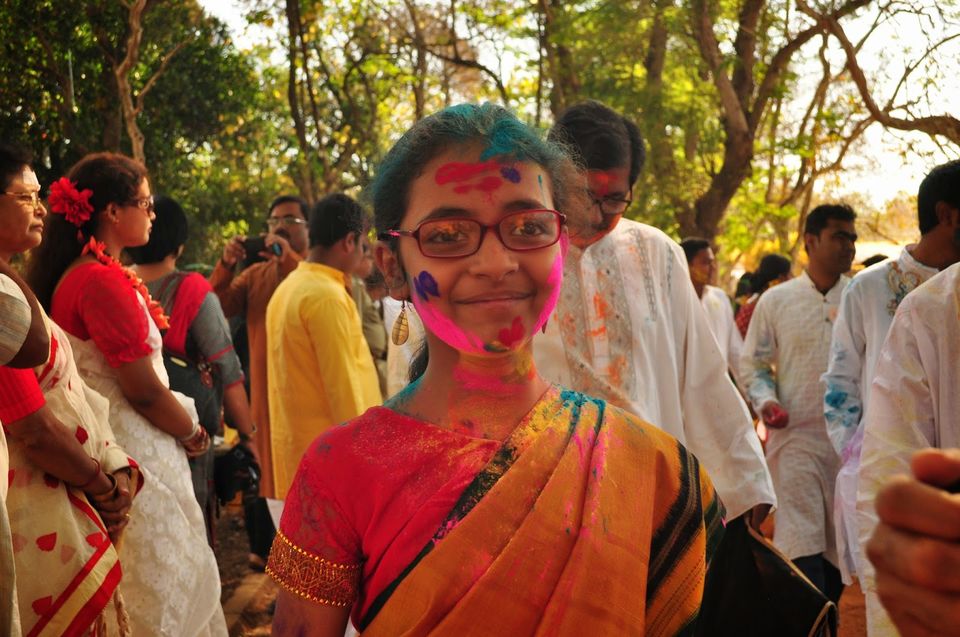
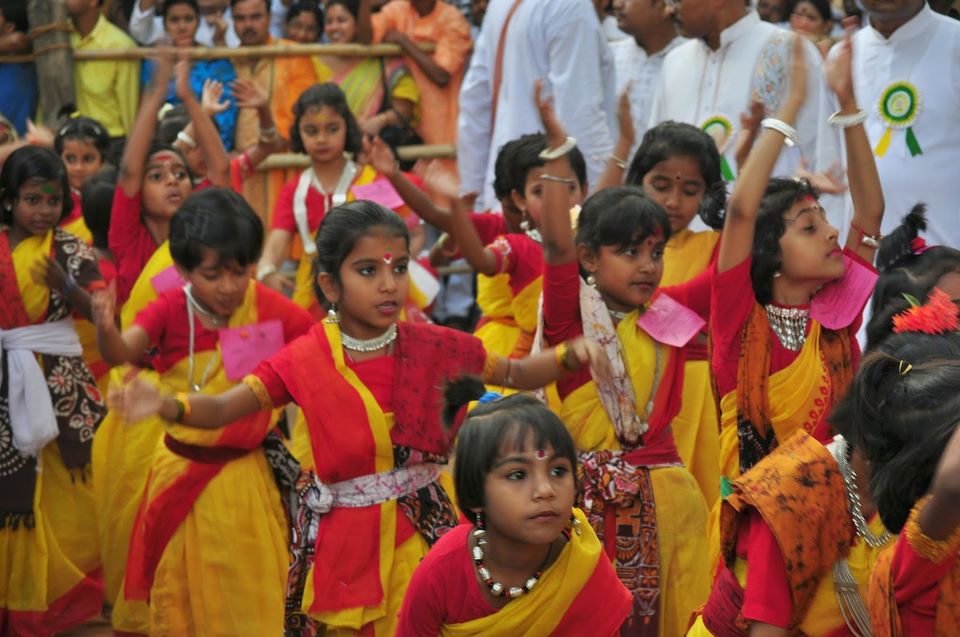
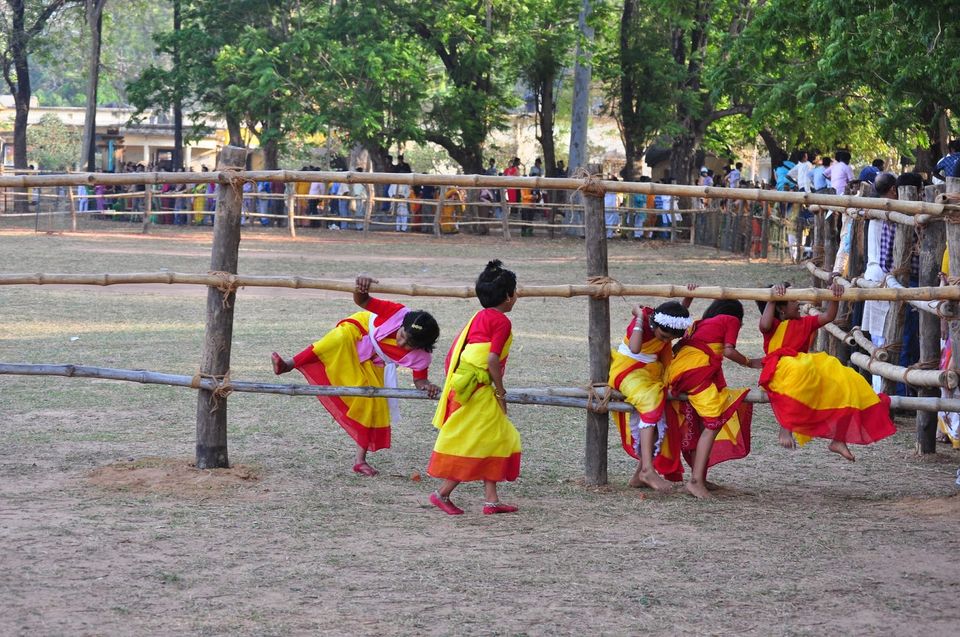
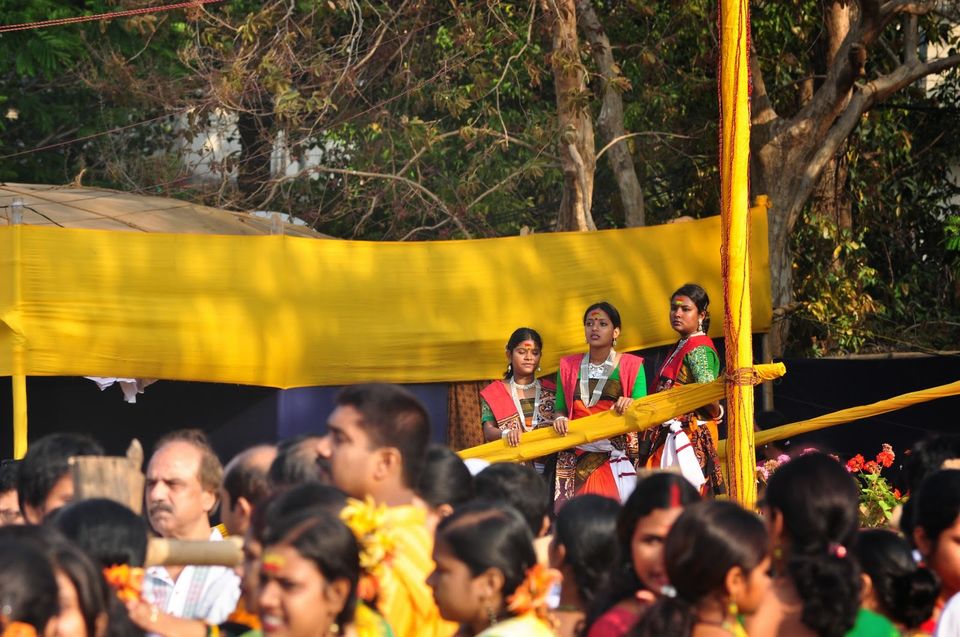
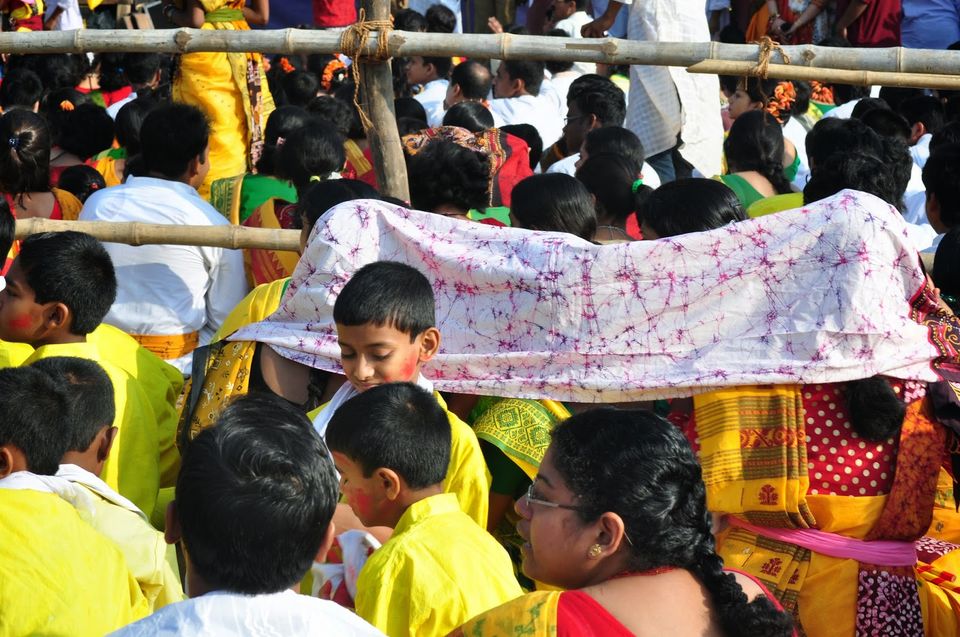
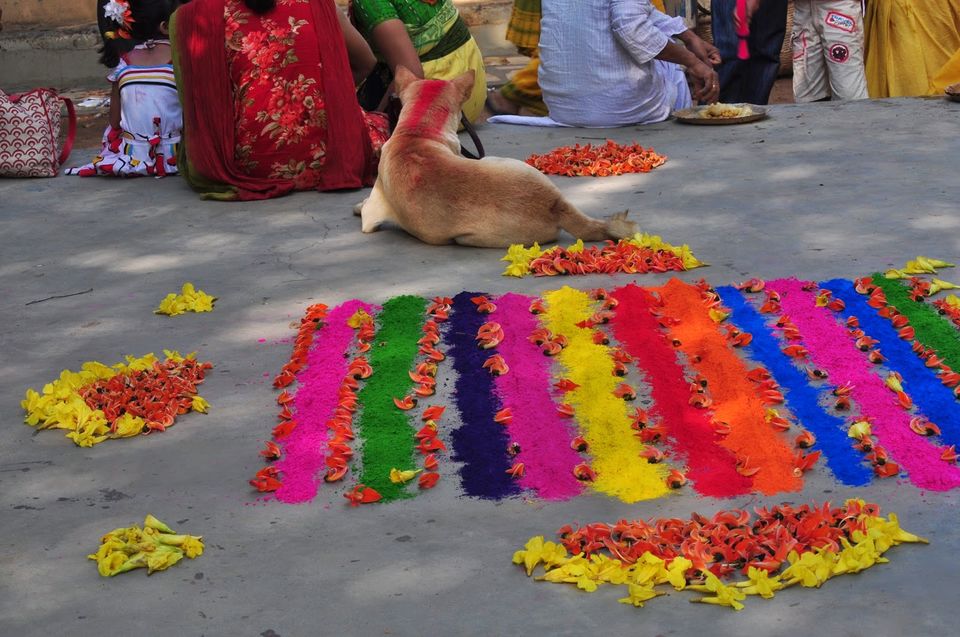
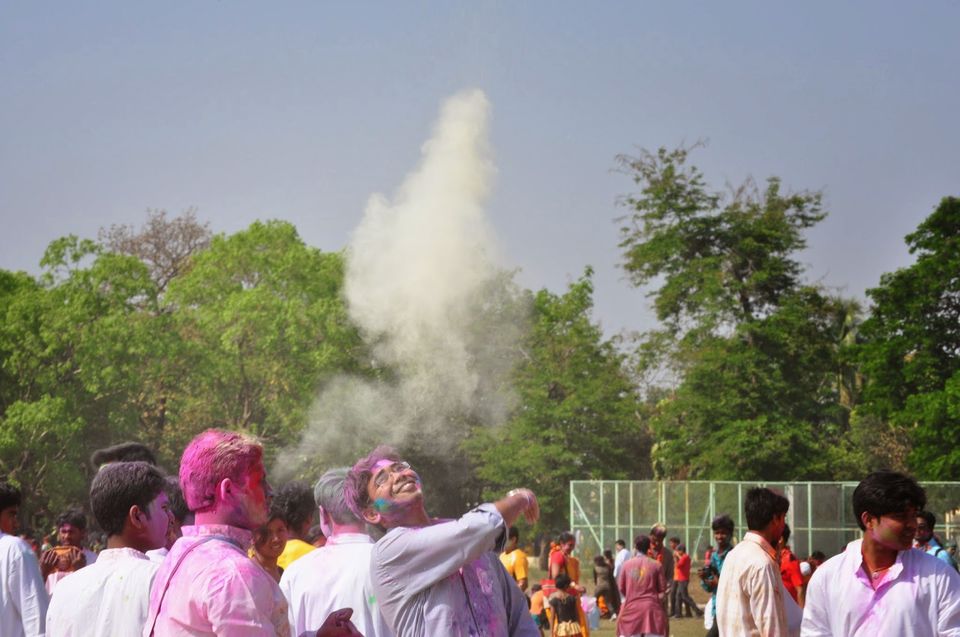
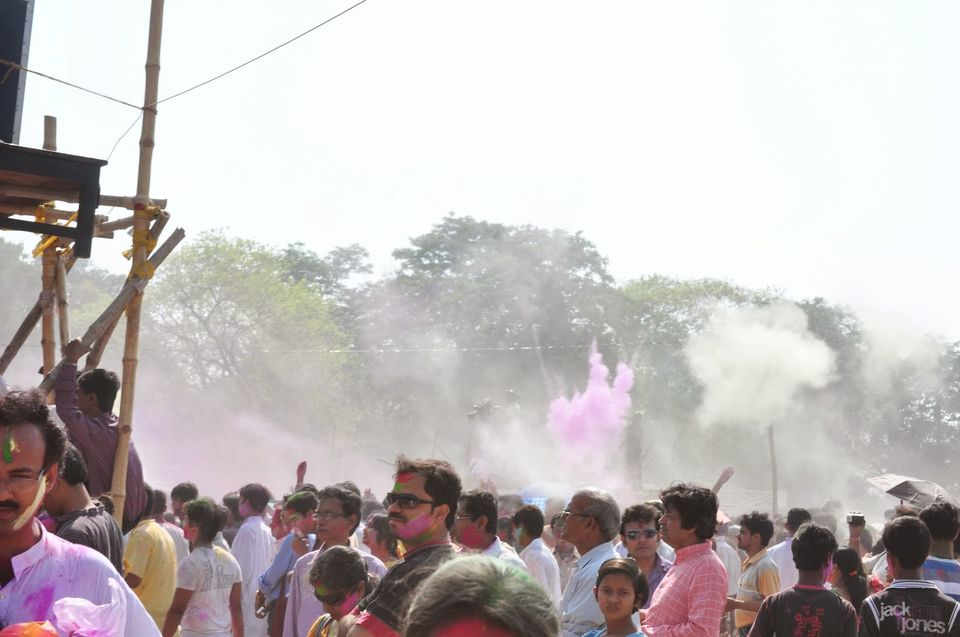
Souls, without the magic of Colours find it terribly difficult to survive. And that's why Rabindranath Tagore, the most colourful wordsmith ever, started the tradition of celebrating the arrival of Spring with Colours. Thus the "Basanta Utsav"(Spring Celebration) was conceived. And it was carefully nurtured with the choicest of Spring Colours so that it could evolve into a global Festival because people all over the world need colours. Not to survive, but to live.
Such a riot of Colours need a place to mix and create many more loving hues. For this festival, the place chosen was Santiniketan. Translated into English, it reads the Abode of Peace. So when colours meet in the Abode of Peace, chaos follows close behind, upsetting the gray and dulled souls, pushing them into a journey that sends out a cloud of colours of cosmic proportions up in the air as a celebration of their union.
Shantiniketan, with its distinctive character and style, decks up for the Spring Festival ('Basanta Utsav') in a remarkable floral way whose chief ingredients are the 'Palash' and the 'Fagun Bou'. The flowers heap mounds of colours on the otherwise red soil of the Rarh region of West Bengal.
As Nature readies herself, her people rehearse for as long as a month to make the festival a resounding success. On the eve of Basanta Utsav, a musical night is staged at the University grounds.
Sitars, Sarods, Tablas and Harmoniums together make up the perfect Spring ambience which is pierced by strong vocals of the performing artists.Since it is the beginning of March, there is still a slight chill in the evening air which makes a cup of tea or coffee seem even more inviting. The local Chai-wallahs make brisk business as they go over to fulfill cups, which sometimes spill over with chit-chat about the next day's schedule.
The Morning Baitalik
The early morning air with the essence of Spring, greets people as they rush to take their postions along the fence that has been put up along the 'red' road. Rabindranath Tagore had taken this route to to herald the arrival of Spring, followed by his students at the Viswa Bharati University. His way of welcoming the season has stood the test of time and even to this day, people abide by it. A procession starts from the 'Ghantaghor' and slowly makes it way to the University grounds.
As with all festivals, the rush hour happens just before the main event. And Basanta Utsav is no exception. The rush is most quintessentially felt amongst the young guns who are all brimming over with excitement and trepidations.
With the eternal lines of the bard's song, " Khol Dar Khol , Laglo Je Dol ", the procession begins. It is indeed unique as it is led by the youngest batch of students enrolled at the 'Ashrama'. Tiny-tots taking energetic and boisterous strides, sometimes mistaking the dance steps but making it up with their toothless grin and enthusiastic eyes !
Their teachers are quick to point out their wrong footings and are adept in damage control. Even spacing becomes crucial when too many little ladies and gentlemen engage in the most prolific form of a dance that has transcended the boundaries of race and culture. Choreography and human error never felt this beautiful before.
Two steps behind them, the seniors continue the procession with colourful sticks (similar to 'Dandiya' sticks) that clash against each other, adding a certain rhythm that reverberates jubilantly. Their steps are perfectly synchronised and it is pure joy to observe their expressions from such a close range.
Their graceful movements coupled with the sonorous
songs of Spring together make up the most beautiful way
to set the pace of the festival. Be it by humming or lip-syncing, people blend in cheerfully and Tagore's dream of achieving a cultural harmony through song and dance comes true.
Time and time again.
After the procession makes its way into the grounds, the festivities begin on stage. With each song and dance sequence, the 'Celebration of Spring' comes alive. The crowd is totally oblivious of a fierce March Sun as the performers captivate the visual and the auditory senses of the audience. Tagore's Spring songs usher in an atmosphere of brotherhood, love and beauty while the world blends into a huge palette of colors that can rival the greatest rainbows..
The last song on the playlist comes up and with the words "Rangiye Die Jao Jao " filling the air, cloudbursts of colored powder (abheer) shower upon the people. Humans in all shapes and sizes, caste and religion, race and creed throw the Abheer up, up towards heaven. And they come back enveloping the world in a colorful protective dome which far exceeds the perimeter of Santiniketan and Tagore's way of uniting people through a common love for colors shines forth brightly like never before.
Abheer smearing happens immediately, punctuated by the steady lyrics of the song. Colours find their way into the unlikeliest of places - the tiny crescent shaped region behind the ears, eyebrows, innocent nostrils and even inside those hearts which open their doors to the world. Humanity lets itself get smudged by the brightest hues of abheer.
It's just as the bard had predicted, a century ago - "Rong Jeno Tor Morme Lage". Translation renders : "Let the colours touch your souls...".
Indeed it has touched ours. In the most divine way.

